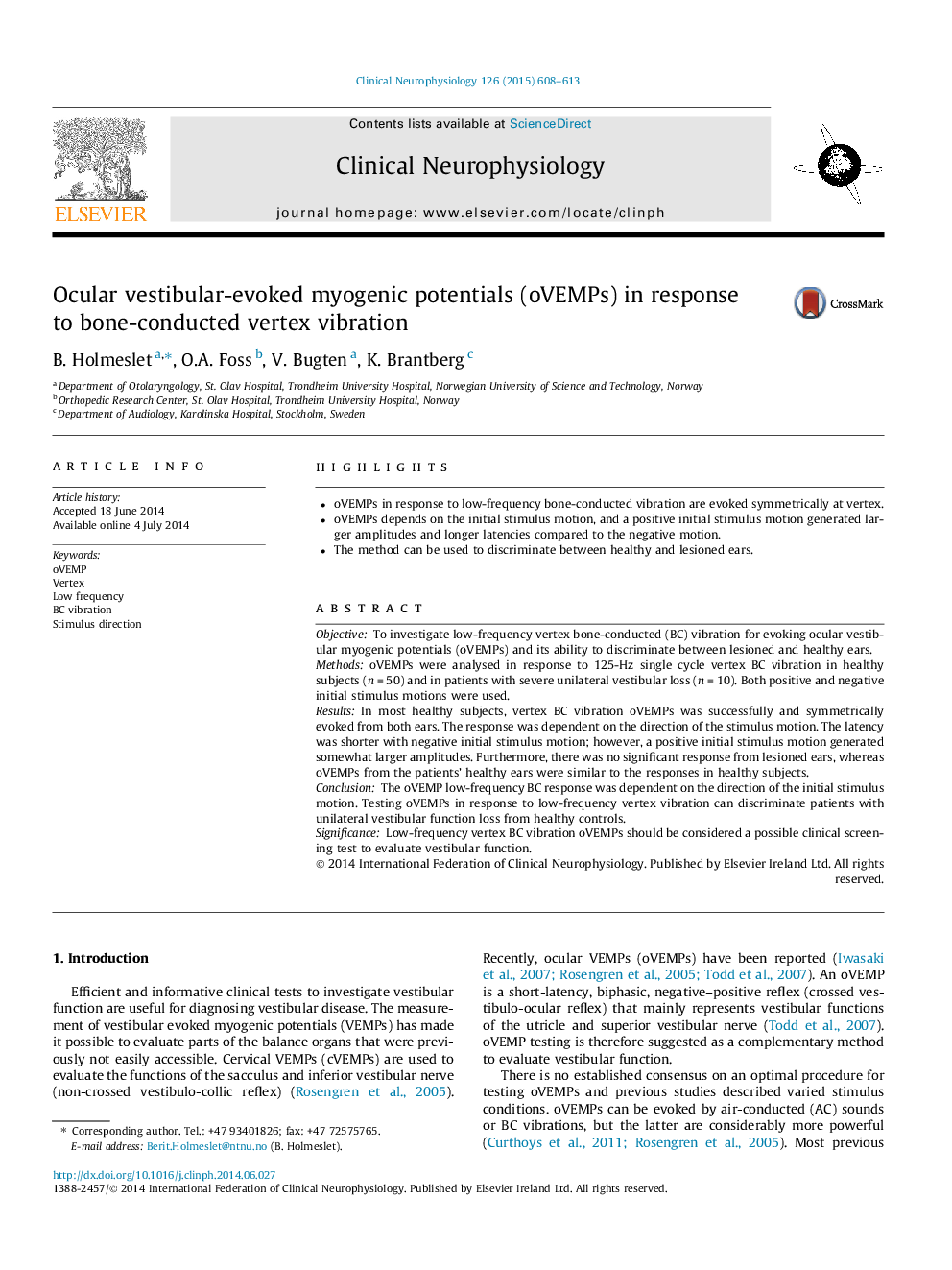| Article ID | Journal | Published Year | Pages | File Type |
|---|---|---|---|---|
| 3043721 | Clinical Neurophysiology | 2015 | 6 Pages |
•oVEMPs in response to low-frequency bone-conducted vibration are evoked symmetrically at vertex.•oVEMPs depends on the initial stimulus motion, and a positive initial stimulus motion generated larger amplitudes and longer latencies compared to the negative motion.•The method can be used to discriminate between healthy and lesioned ears.
ObjectiveTo investigate low-frequency vertex bone-conducted (BC) vibration for evoking ocular vestibular myogenic potentials (oVEMPs) and its ability to discriminate between lesioned and healthy ears.MethodsoVEMPs were analysed in response to 125-Hz single cycle vertex BC vibration in healthy subjects (n = 50) and in patients with severe unilateral vestibular loss (n = 10). Both positive and negative initial stimulus motions were used.ResultsIn most healthy subjects, vertex BC vibration oVEMPs was successfully and symmetrically evoked from both ears. The response was dependent on the direction of the stimulus motion. The latency was shorter with negative initial stimulus motion; however, a positive initial stimulus motion generated somewhat larger amplitudes. Furthermore, there was no significant response from lesioned ears, whereas oVEMPs from the patients’ healthy ears were similar to the responses in healthy subjects.ConclusionThe oVEMP low-frequency BC response was dependent on the direction of the initial stimulus motion. Testing oVEMPs in response to low-frequency vertex vibration can discriminate patients with unilateral vestibular function loss from healthy controls.SignificanceLow-frequency vertex BC vibration oVEMPs should be considered a possible clinical screening test to evaluate vestibular function.
